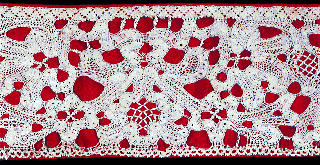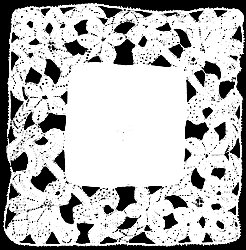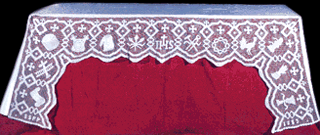3rd Biennial 1997
The census of vestments in the churches of the Cantù area, which went on alongside an in-depth archival research, allowed the bringing to light of true “treasures” which rarely, because of their value or their limited use in current liturgy, emerge from the sacristy wardrobes where they are conserved. However, the inventory in the sacred buildings of Cantù Parish Church has not yet led to the discovery of lace earlier than the nineteenth century.
The absence of more ancient evidence must be due mostly to reasons which are easy to imagine, such as continual wear and tear and consequent replacement, since the lace borders are applied to vestments which are used almost daily.
A different but unfortunately common fact to which the lack of more ancient lace must be imputed is its disposal via the antique market, as well as the habit, lasting even to this day, of burning unusable remains of vestments. Here below we propose some examples of lace exhibited on the occasion of the Third Biennial , a more accurate description of which is to be found in the catalogue of the exhibition (Tra devozione e artigianato. I merletti nell'addobbo liturgico della Pieve di Cantu'[Between devotion and handicraft. Lace in the liturgical decoration of Cantù Parish Church]).
Lace in sacred vestments between the sixteenth and eighteenth centuries

Border
The border, which has been recently adapted as a orphrey and applied on a red silk taffeta support, according to some oral evidence comes from a church in the Como area which it has not been possible to identify. Its size suggests original use as a ruffle on an alb or a border on an altar cloth. Despite the alterations in design due to mending and re-adaptation the decoration appears to be typical of lace of the “Milano stitch” type, carried out on matching pieces.
Page 26 Exhibition Catalogue.

Pall
Northern Italy, last quarter of seventeenth century, cm 15 x 15, linen cloth, linen bobbin lace.
Gandino Basilica Museeum.
Page 25 exhibition catalogue.
Cantu' production of sacred vestments between the late nineteenth and twentieth centuries

Altar cloth
Vighizzolo, Chiesa dei Ss. Apostoli Pietro e Paolo (Church of the Apostles St Peter and St Paul).
Page 31 exhibition catalogue.


